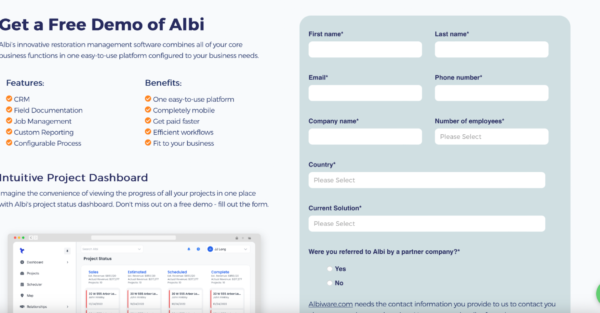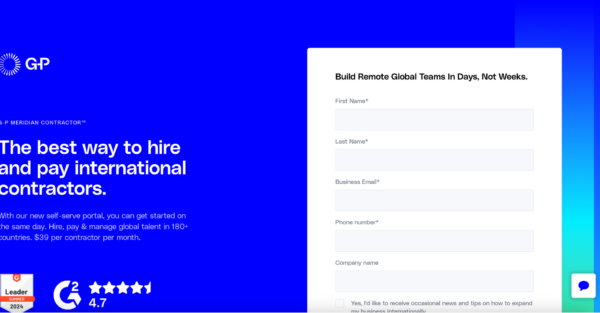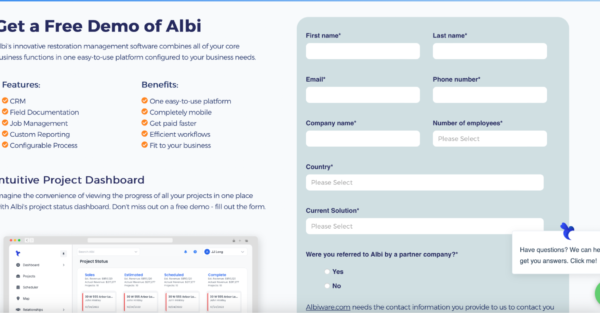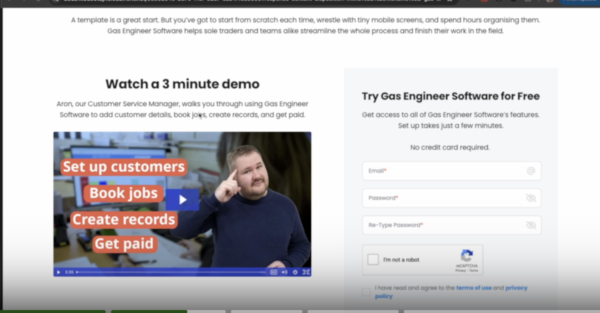Solving Your SaaS Conversion Funnel: Step by Step Audit
Last updated: February 12th, 2025
“We’re generating traffic/leads, but we aren’t closing enough deals.”
This is a common issue we hear from prospects, and it’s a tricky situation to solve because there are plenty of reasons why a person might visit your website or become a lead and never pull the trigger to become a customer.
Are you attracting unqualified prospects?
Is sales dropping the ball on demo calls?
Is the landing page offer misaligned with the ad driving the traffic?
Running A/B tests is a common best practice to increase conversions, though without understanding why prospects aren’t converting, most of these tests fail to produce meaningful improvements.
In this post, we’ll show you how to audit the entire conversion funnel to understand:
- Where prospects drop off within your funnel
- The friction that’s causing them to drop off
- How to rework campaigns to deliver the right messaging at the right time.
This methodical approach will help you understand which elements of your funnel to test and potential tests that would meaningfully increase conversion rates.
1. Pre-Click Targeting
Some funnels we audit are well constructed, but the messaging in the ads and content driving traffic to the funnel attracts the wrong audience.
Unfortunately, regardless of how well-optimized your funnel is, you won’t be able to convert wrong-fit prospects (or, if you do manage to convert wrong-fit prospects, you’ll end up with customer support headaches and negative reviews).
Most companies know more or less who their best customers are, but a common mistake is that the ICP is too loosely defined, leading to vague pre-click messaging.
Vague messaging creates two problems:
- The messaging isn’t compelling enough to maximize clicks from right-fit prospects and
- Some poor-fit prospects click onto your landing page out of curiosity only to realize it’s irrelevant, leading to lower conversions and wasted ad spend.
We have a detailed process for identifying right-fit prospects, including identifying the specific decision-maker and stakeholder titles, when and how they become involved in the buyer journey, and their unique pain points and benefits that would resonate with them.
We have a separate resource detailing the customer research process we execute for clients at the beginning of each engagement, and it’s key information we use to direct our pre-click messaging to attract the right prospects to enter the funnel.
2. The Landing Page
If a prospect clicks on an ad, the pre-click messaging and promise clearly resonate with prospects.
Therefore, here are the main reasons a prospect wouldn’t convert after arriving on your landing page are:
- The pre-click and landing page messaging are misaligned. The copy should mention the same pain points and benefits as the pre-click messaging. If that messaging won the click, it clearly resonated with the prospects who clicked on it, so don’t change it.
- The landing page is cluttered or vague. Prospects won’t understand the value of proceeding in the buyer journey. Here’s an example of a landing page where there are simply too many different benefits and value propositions, leaving the prospect feeling confused:

- It’s unclear how prospects should take action and/or what happens next. Ensure the CTA is positioned above the fold and it’s clear exactly how prospects can access what they clicked on the landing page to access. The value prospects will receive by proceeding should also be clear. For example, this landing page doesn’t indicate what happens next. Are they getting on a 30 minute demo? Are they receiving a free trial? A free resource?

- There’s too much friction for prospects to move forward. If your form is too long, people won’t convert. Instead, take a progressive profiling approach by asking for just their name and email and then earn more information about them through nurture. For example, this landing page has too many different fields for prospects to fill out, which could cause right-fit prospects to abandon the landing page:

The most common overarching problem is that marketers simply over-optimize their landing pages.
Instead, keep it simple. Echo the exact pre-click messaging, make it clear what will happen if prospects proceed, and make the process of proceeding (e.g., form fill) frictionless.
3. MQL Stage
Many conversions are lost between the time a prospect fills out a lead form and attends a demo.
A confusing thank you page is the first mistake that can prevent prospects from reaching the next stage of the buyer journey.
For example, this thank you page doesn’t give prospects any indication of what will happen next or how they can move forward in the buyer journey.
Best practices vary depending on the type of thank-you page.
For demo sign-up thank you pages, place a calendar booking link front and center above the fold. Avoid having a sales team member reach out to arrange a call, as that adds unnecessary friction to the process.
Once prospects schedule a call, the second thank you page can direct them to other resources to prepare for the call, like links to content answering commonly asked questions. This will help prospects show up for the demo prepared with more advanced questions to expedite the buyer journey.
For thank you pages following a resource download, tell them how they can access the resource (e.g., it arrives in their email in 15 minutes) and introduce them to your solution.
For example, if prospects signed up for a free template, and you have software that automates the task the template solves, you can include a three minute demo of your software by illustrating how it makes the process even easier than the template.

In addition to the thank you page, ongoing communication before the scheduled demo or following the resource download is essential to keeping prospects engaged so that they show up.
Our solution to keep prospects engaged is the 14 day nurture sequence.
This is a series of five emails sent over a two-week period that educates the prospect on how the product solves three of their biggest pain points.
We have a separate resource discussing how we develop these email sequences, but the most important thing is ensuring your emails highlight your prospect’s most relevant pain points.
If your emails have low engagement, it’s often because the copywriting with the emails discusses pain points that are either irrelevant or too vague.
To ensure you’re discussing the right pain points in language that resonates with your prospects, revisit the audience research process in step one to better understand the problems customers purchase your product to solve.
If you have multiple ICPs, you may need to segment your nurture sequences to ensure the pain points are specific and directly relevant to the prospect receiving the emails.
4. SQL Stage
Following the demo, prospects that didn’t convert should receive a follow-up to continue moving them through the buyer journey.
A sales team member often manually sends this follow-up, though even the most diligent people occasionally forget to do so. Or, sales may send a follow-up at a similar time as marketing, overwhelming prospects with too much communication.
The solution to ensure every prospect receives a well timed follow-up with effective messaging is to work together with sales to set up automated follow-up sequences through a CRM like HubSpot and Salesforce.
In the automated follow-up emails, provide answers to FAQs, case studies, white papers, and other resources dedicated to specific objections and questions that arise following a demo.
5. Opportunity Stage Optimizations
After prospects attend a demo and you provide them with sales enablement materials addressing common objections and questions, the next step is for sales to have a more personal touch with these prospects and identify and answer specific questions or objections holding prospects back from taking the final step in the buyer journey.
If the prospect says “no” because the timing isn’t right or they don’t have the budget, most teams part ways with these opportunities.
However, if circumstances change (e.g., budgets increase, priorities shift, etc.), there’s still an opportunity to convert right-fit prospects at a later date. To re-engage these prospects, we enter them into the dead lead reviver reactivation sequence.
Then, they receive an automated single-line email such as:
“Are you still looking for a solution to (problem)?”
The cadence of the dead lead reviver depends on the end-to-end buying cycle for your product.
For example, if it’s a 30 day buying cycle, send a reactivation campaign around the 30 day mark. For longer buying cycles, you can send a reactivation campaign about once per quarter.
6. Post-Acquisition Optimization
One of the easiest ways to increase the ROI of your marketing efforts is increasing customer retention. Many customers churn because the product experience isn’t congruent with expectations set during the marketing and sales process or they never figured out how to use the product.
The first step to preventing churn is delivering a seamless onboarding process that helps prospects understand how to use the product effectively for their specific use case.
Prospects just spent at least three to six months in the sales cycle communicating one-on-one with a salesperson, so they’ll expect to receive a similarly personalized onboarding experience.
Leveraging data from recently closed deals to understand how prospects experience the buyer journey is another often overlooked opportunity to improve your future marketing efforts.
For example, most people think this is how prospects experience the buyer journey.
Yet there are multiple ways a prospect navigates the buyer journey.
And keep in mind that prospects don’t conform to your version of the buyer journey.
Therefore, understanding how prospects experience the buyer journey will help you provide them with the resources and messaging at the right time so that they move through the journey more efficiently.
The problem is that accurately tracking each step of a buyer’s journey can be tricky, especially if you have a six to twelve month buying cycle, multiple lead magnets, and multiple customer segments.
Some SaaS companies track first touches with the brand through Google Analytics, and then they may track a first call with the sales team in a CRM like HubSpot or Salesforce.
Yet few companies have a complete overview of how customers experience the buyer journey. For example, the sales team might forget to log some of the calls, or some lead magnets may not be accounted for in the journey.
To solve these problems, we work with our clients to automate as much tracking as possible and then we can also identify any tracking that can’t be attributed and provide support to help the team stay disciplined in tracking these aspects.
How To Further Improve Your SaaS Conversion Funnel
The customer journey for enterprise SaaS companies can last anywhere from six to eighteen months, making it challenging to pinpoint exactly where you lost prospects and why.
While you can spend time experimenting on your own to identify weak links in your buyer journey, you can also reach out to our team of SaaS marketing experts for more personalized assistance.
Our team works with dozens of enterprise B2B SaaS companies and our experience can expedite the process of identifying bottlenecks and solving them.
Reach out today to improve your SaaS conversion rates.
What you should do now
Whenever you’re ready…here are 4 ways we can help you grow your B2B software or technology business:
- Claim your Free Marketing Plan. If you’d like to work with us to turn your website into your best demo and trial acquisition platform, claim your FREE Marketing Plan. One of our growth experts will understand your current demand generation situation, and then suggest practical digital marketing strategies to hit your pipeline targets with certainty and predictability.
- If you’d like to learn the exact demand strategies we use for free, go to our blog or visit our resources section, where you can download guides, calculators, and templates we use for our most successful clients.
- If you’d like to work with other experts on our team or learn why we have off the charts team member satisfaction score, then see our Careers page.
- If you know another marketer who’d enjoy reading this page, share it with them via email, Linkedin, Twitter, or Facebook.